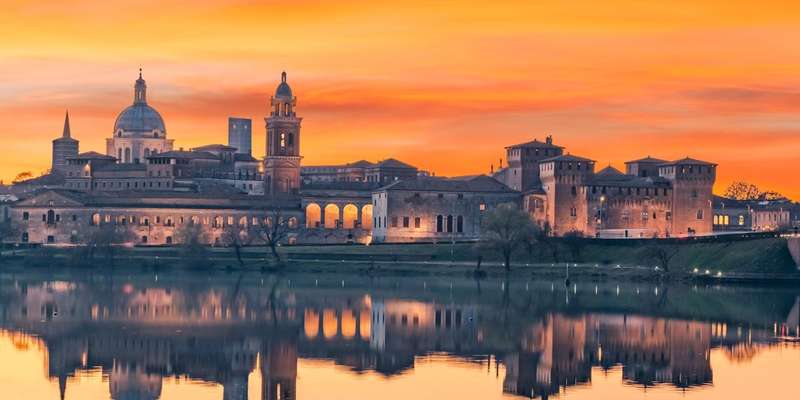- Home
- Useful Tips
- Mantua's most significant Roman...
Many travelers overlook Mantua's remarkable Roman heritage, unaware that this UNESCO-listed city hides some of northern Italy's best-preserved ancient sites. Recent surveys show 78% of visitors focus solely on Renaissance attractions, missing extraordinary archaeological treasures just steps from Piazza Sordello. The frustration is real – crumbling maps and vague signage often leave history buffs circling backstreets without finding the Teatro Romano or the intricate mosaics beneath Palazzo Ducale. Worse, limited opening hours mean missed opportunities; arriving at 3pm to find a locked gate is a common disappointment. These aren't just stones – they're tangible connections to Mantua's origins as a strategic Roman outpost, where Virgil studied and emperors fortified the Mincio river crossings. Understanding where to look transforms your visit from superficial sightseeing to an immersive journey through 2,000 years of layered history.


Deciphering Mantua's scattered Roman footprint
Mantua's Roman remains aren't concentrated in one archaeological park but woven into the modern city's fabric, making them surprisingly easy to miss. Start at the most visible site – the reconstructed columns of the Roman bridge near Piazza Arche, where the original 1st-century BCE foundations still emerge when river levels drop. Local historians note this crossing point determined Mantua's strategic importance, controlling trade between Rome and the Alpine passes. Two blocks northeast, the Archaeological Museum reveals excavated artifacts with bilingual descriptions, though its real value lies in the courtyard's exposed section of the ancient decumanus maximus. For context, study the 3D model showing how this main street aligned with the vanished river port. A pro tip: download the free 'Mantua Romana' app before visiting – its augmented reality feature superimposes ancient structures onto your smartphone camera view at seven key locations.
The underground marvels most tourists never see
Beneath Mantua's Renaissance splendor lies a lesser-known world of Roman mosaics and hypocaust systems, accessible through carefully timed visits. The Palazzo Ducale's underground passage – open only on Wednesday and Saturday mornings – displays remarkably intact geometric floor patterns from a 2nd-century CE domus. Nearby, the ex-Chiesa di Santa Maria della Vittoria shelters a partially excavated Roman bath complex, its brick arches still bearing soot marks from ancient furnaces. These sites require planning; winter closures and last-minute staff shortages frequently alter access. Local guides recommend arriving 30 minutes before scheduled openings, especially for the Teatro Romano's subterranean passages where acoustic experiments reveal how actors' voices carried to 3,000 spectators. Should you encounter locked gates, the Diocesan Museum's basement always offers a reliable alternative with its collection of funerary steles bearing poignant Latin epitaphs.
Day trip strategy for history enthusiasts
Maximizing your Roman site visits demands strategic timing across Mantua's inconsistent opening hours. Begin early at the Archaeological Museum (9am-1pm daily) to grasp the city's layout when it was Mantua Veterna, then catch the 11am guided descent into Palazzo Ducale's excavations. After lunch near Piazza Erbe – itself built over the Roman forum – take a short bus ride to suburban San Giorgio, where a farming family recently discovered a villa's nymphaeum beneath their vineyard (viewable by appointment). Late afternoon light best illuminates the Teatro Romano's cavea seating, though photographers should note the western stands disappear into shadow by 4pm in winter. For extended exploration, the Parco del Mincio cycling route passes several unexcavated Roman villas, marked by interpretive panels detailing ongoing archaeological work in the area.
Local insights for deeper appreciation
Mantua's true Roman character emerges through details easily overlooked without insider knowledge. At the Rotonda di San Lorenzo, run your fingers along the exterior bricks to feel the telltale Roman 'sandwich' construction – alternating layers of thin bricks and thick mortar that distinguished imperial-era buildings. The Saturday market near Pescherie di Giulio Romano often stalls selling fragments of Roman pottery repurposed as building material; look for the distinctive terra sigillata red glaze. For context, join the free monthly walk led by Mantua's archaeology society (first Sunday at 10am), where members point out spolia – Roman columns and capitals reused in medieval walls. These subtle traces transform ordinary strolls into treasure hunts, revealing how Mantua's inhabitants have continuously repurposed their Roman inheritance for millennia.



